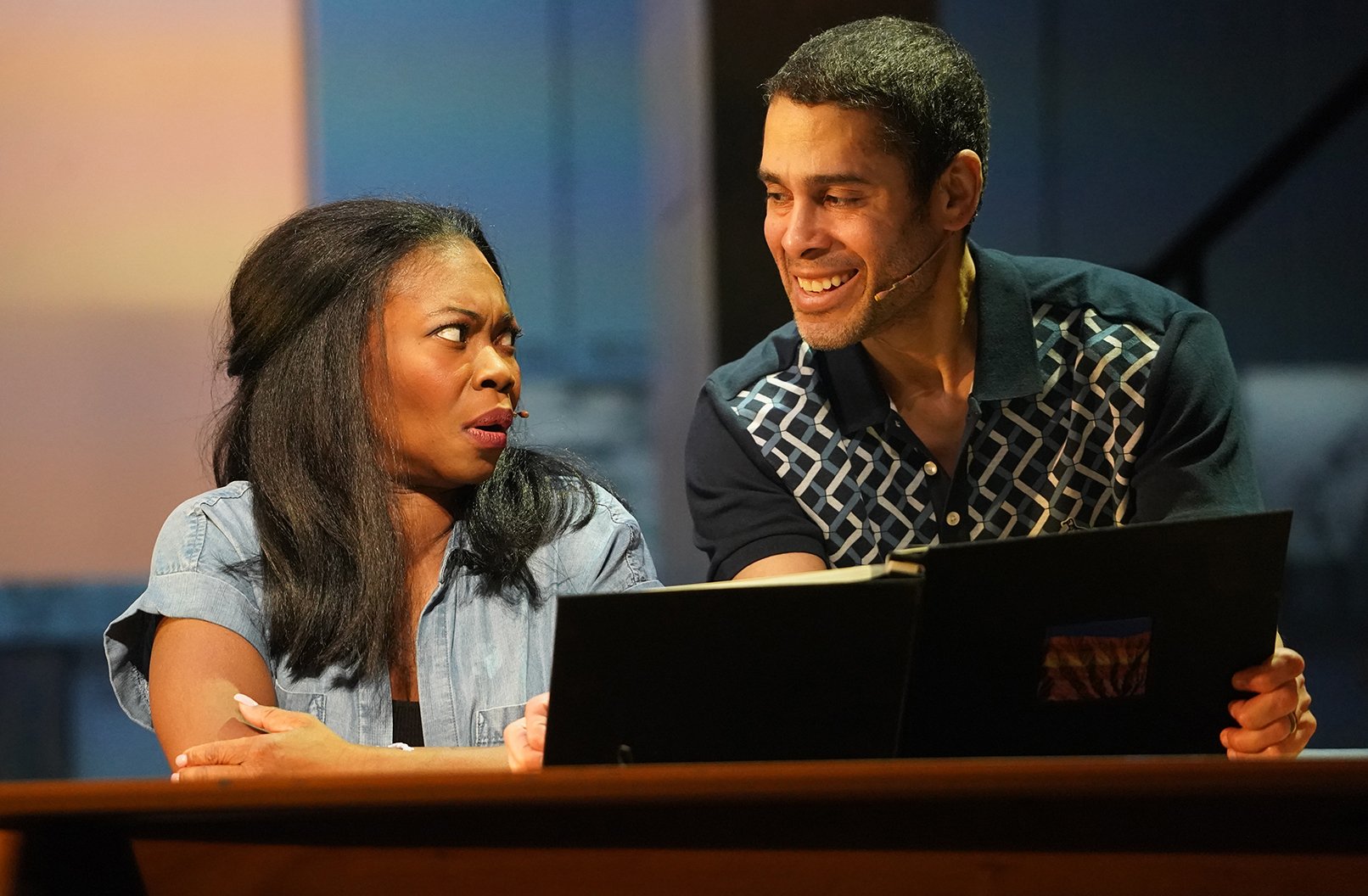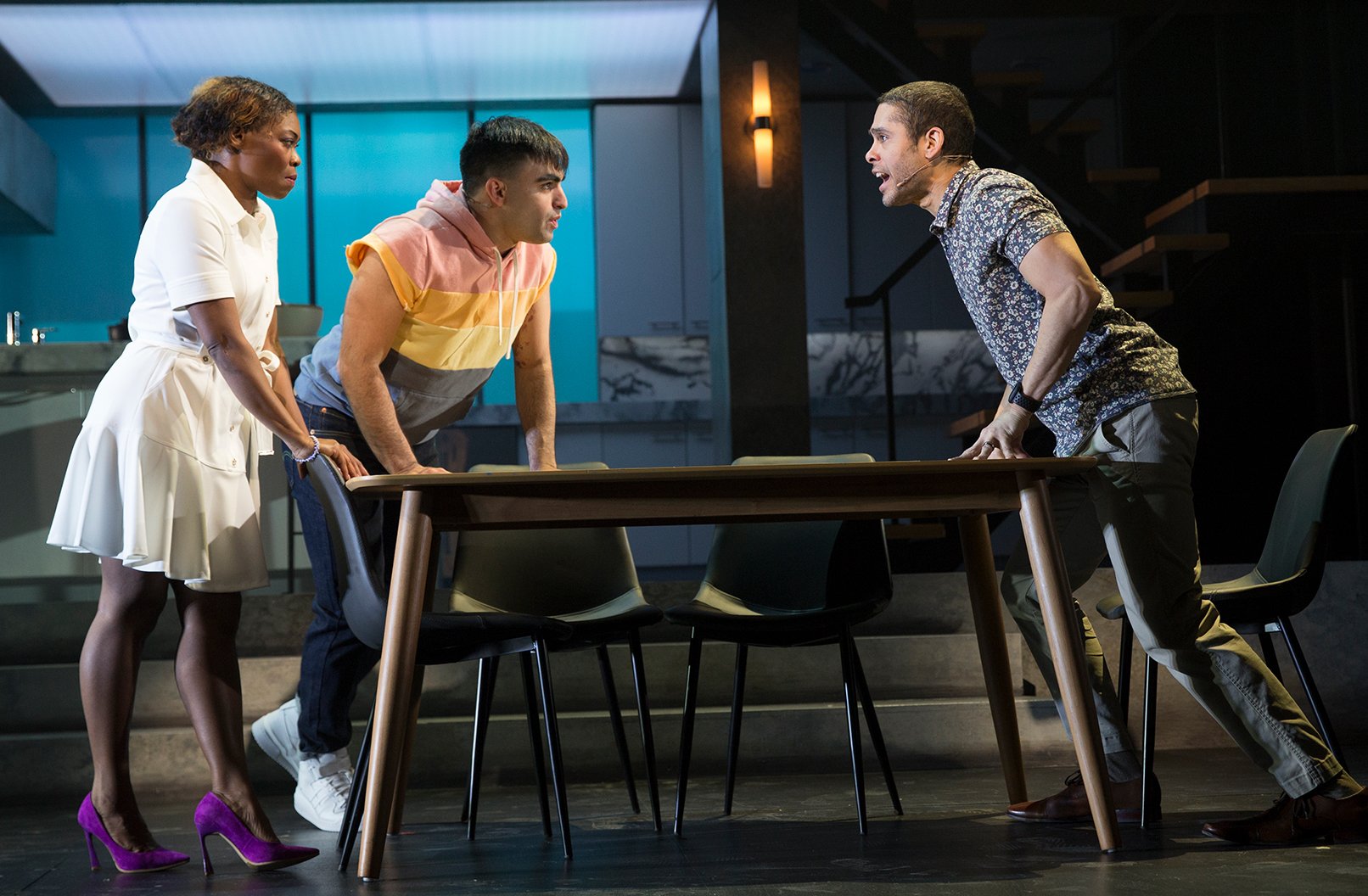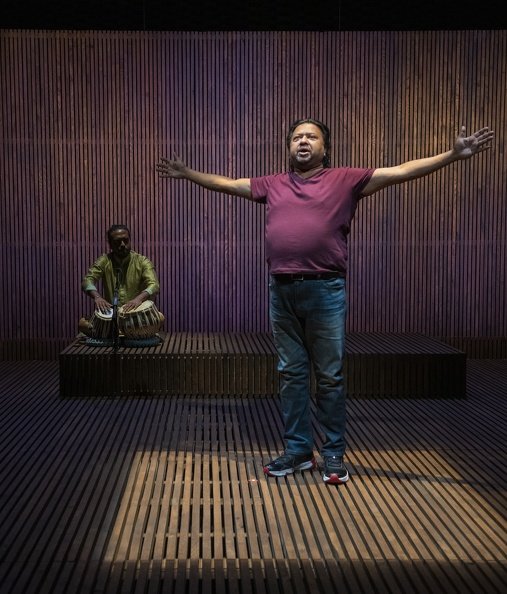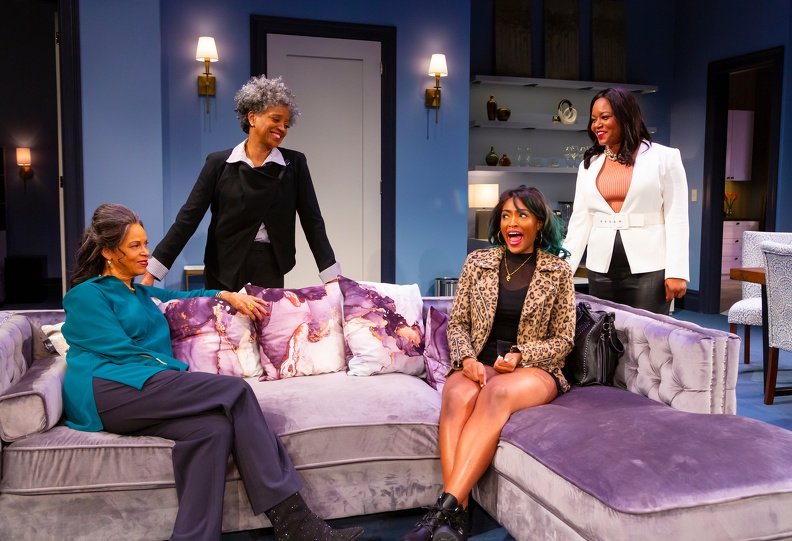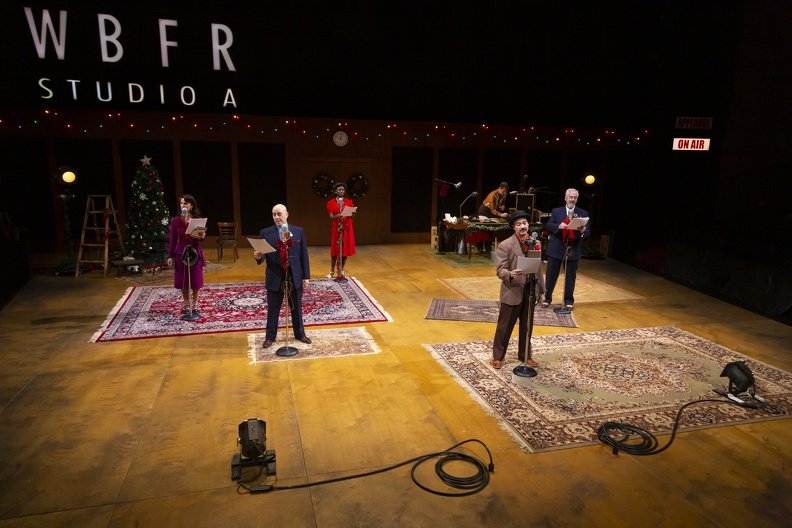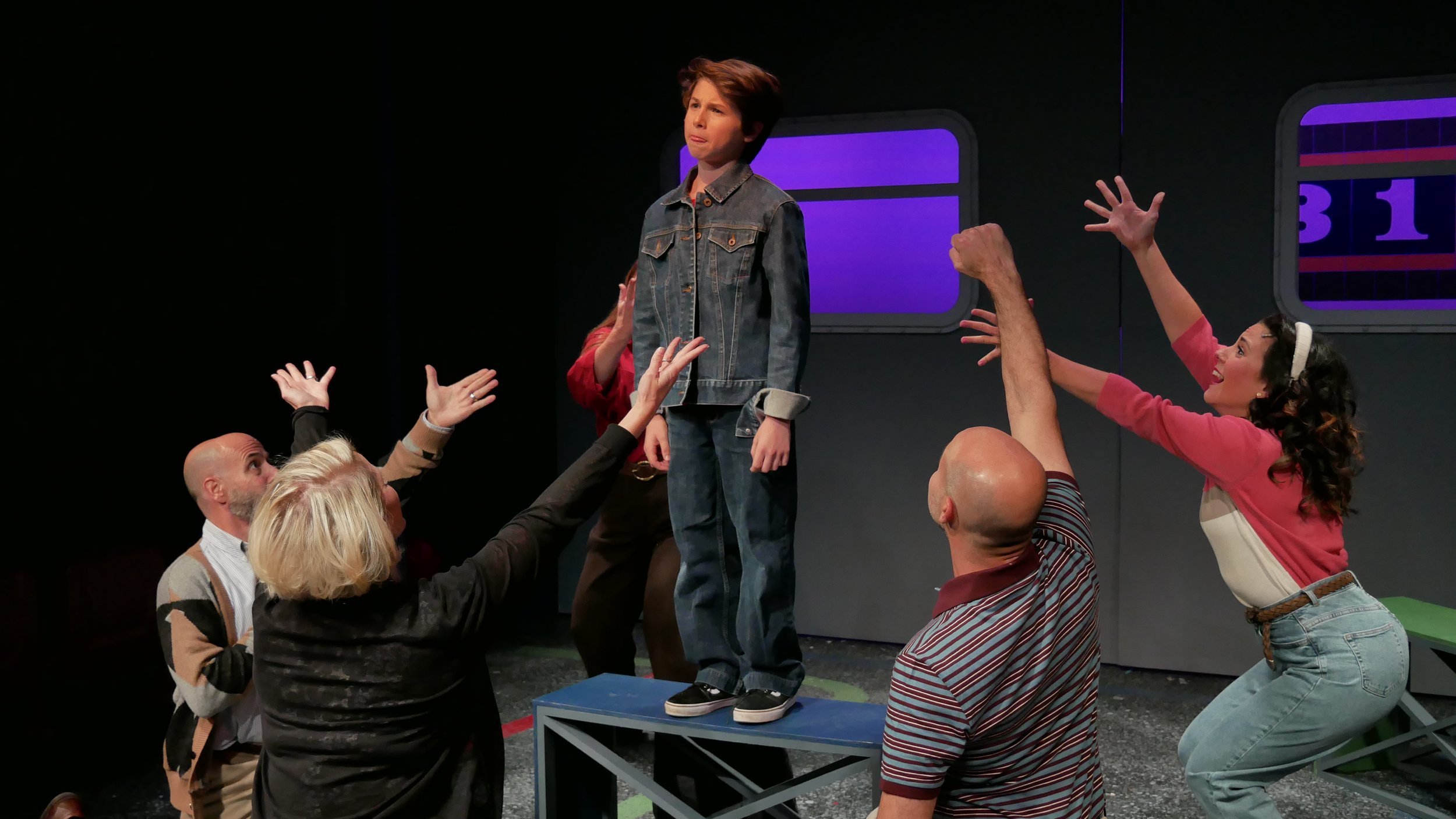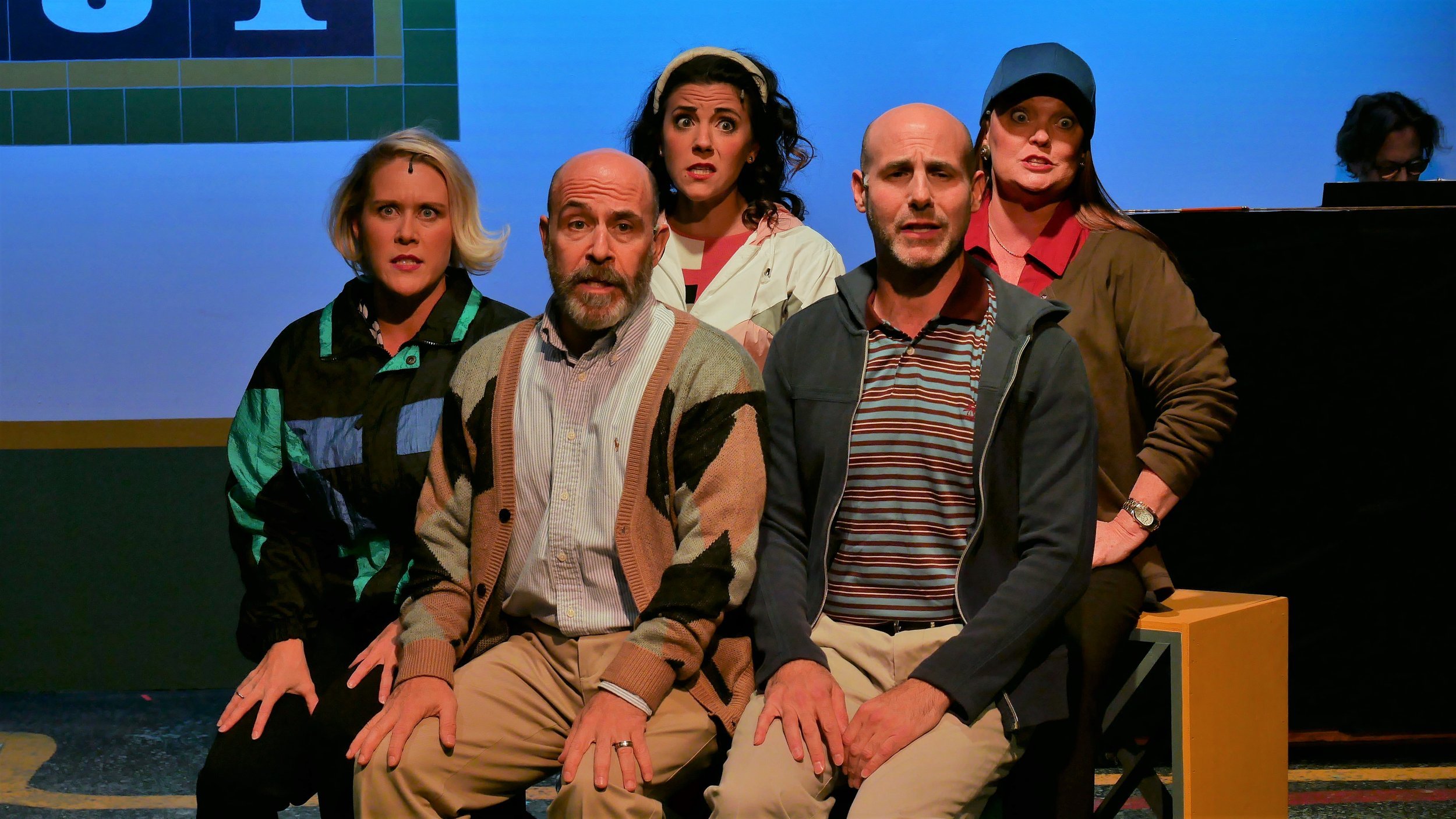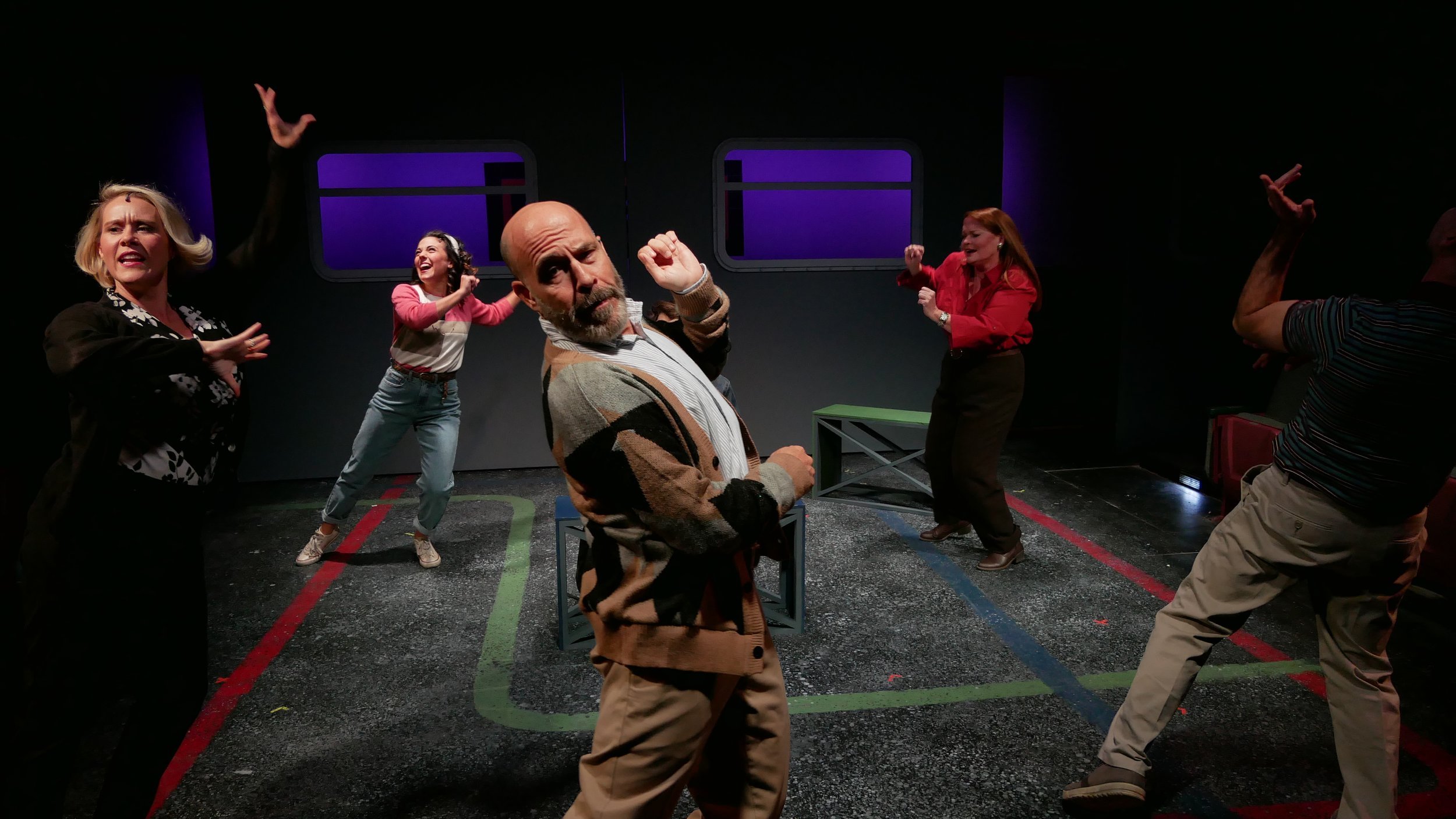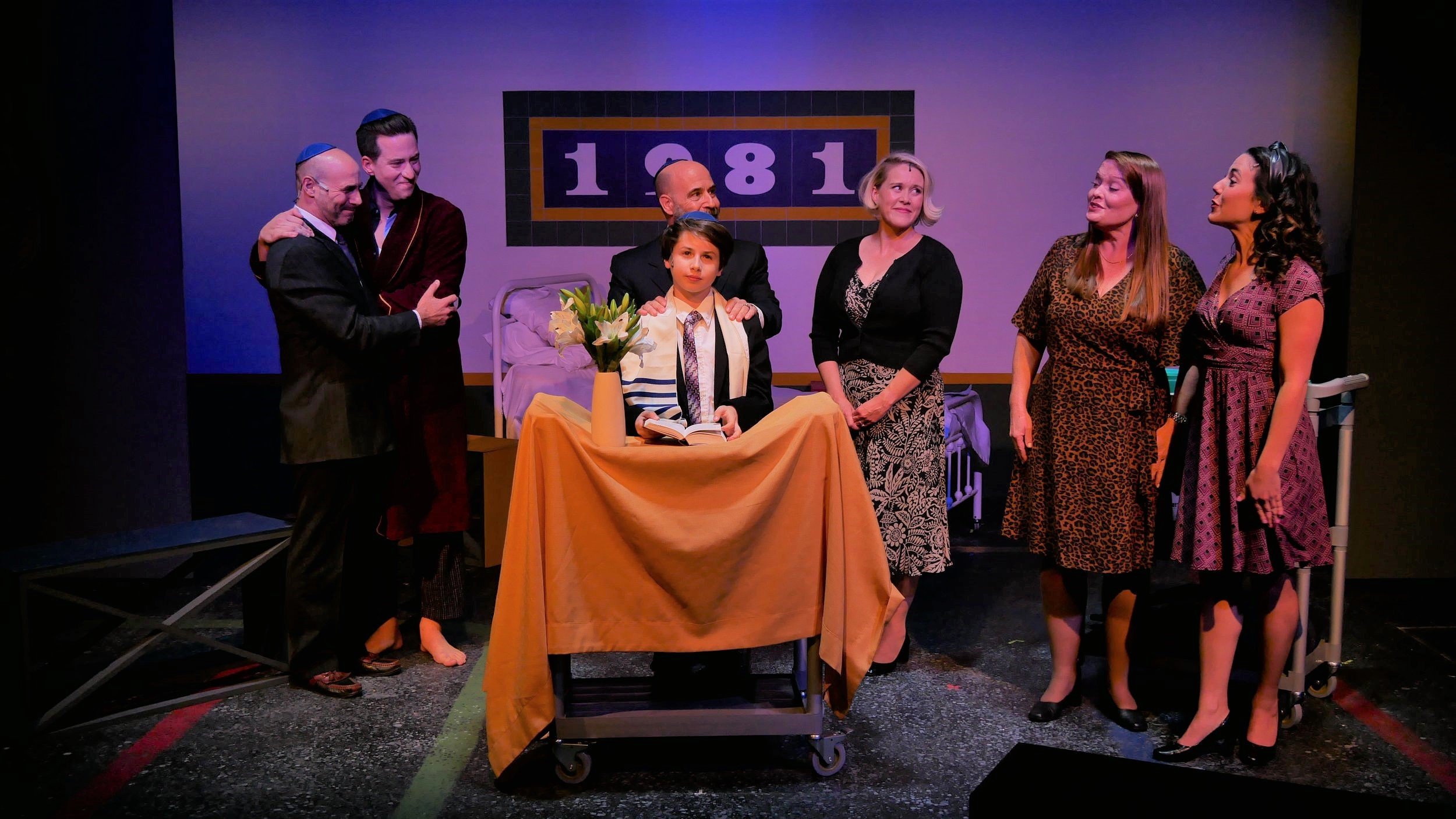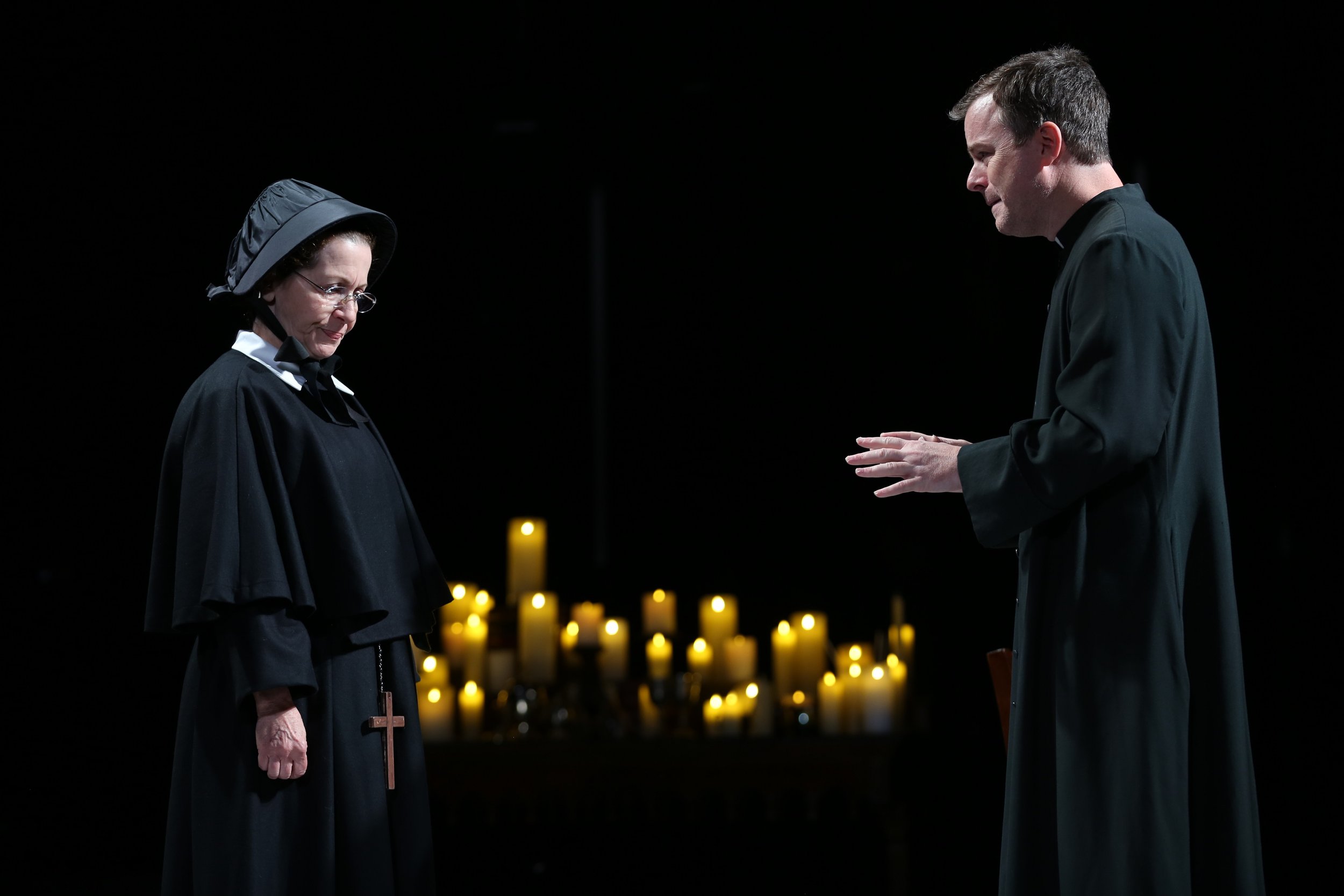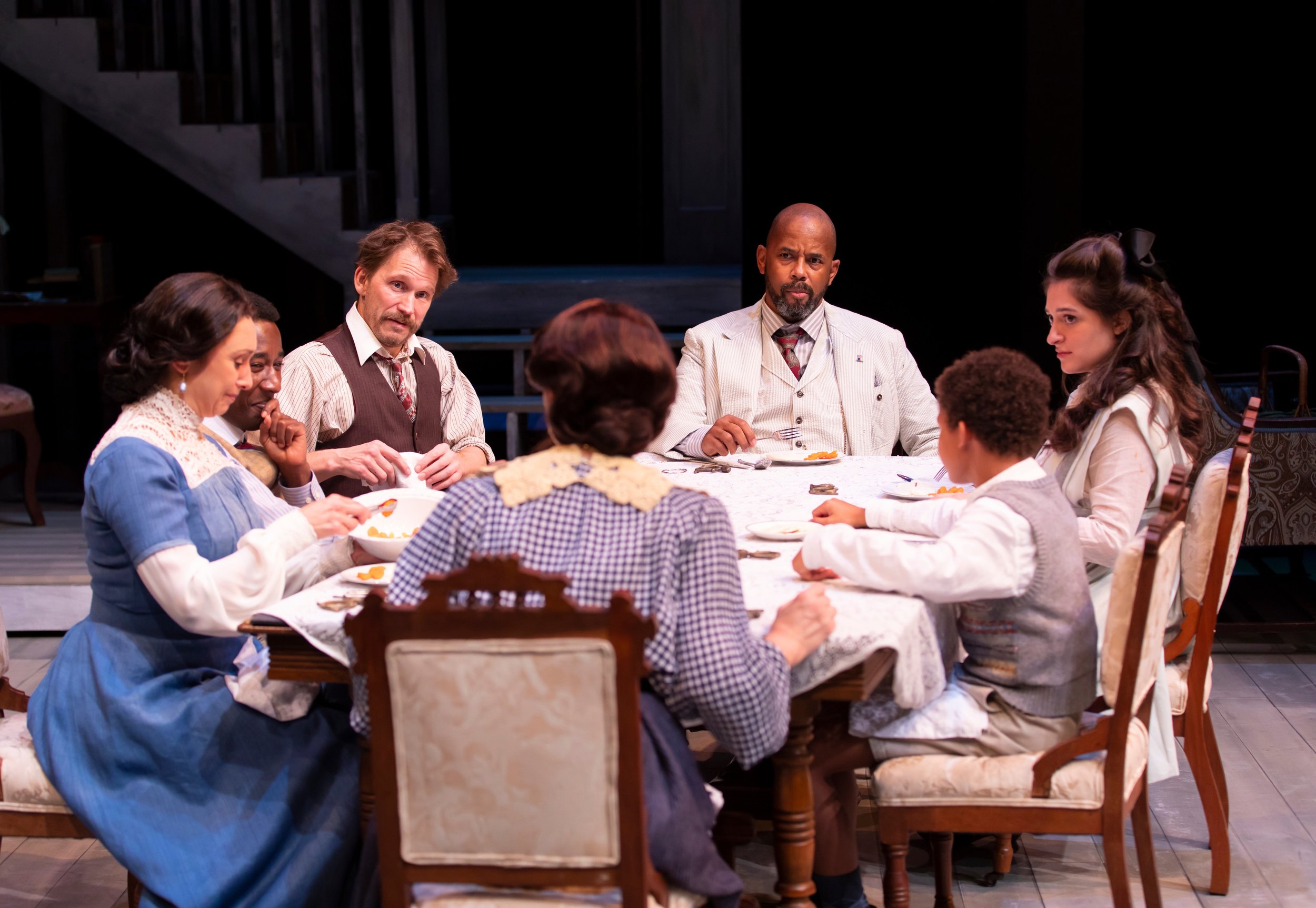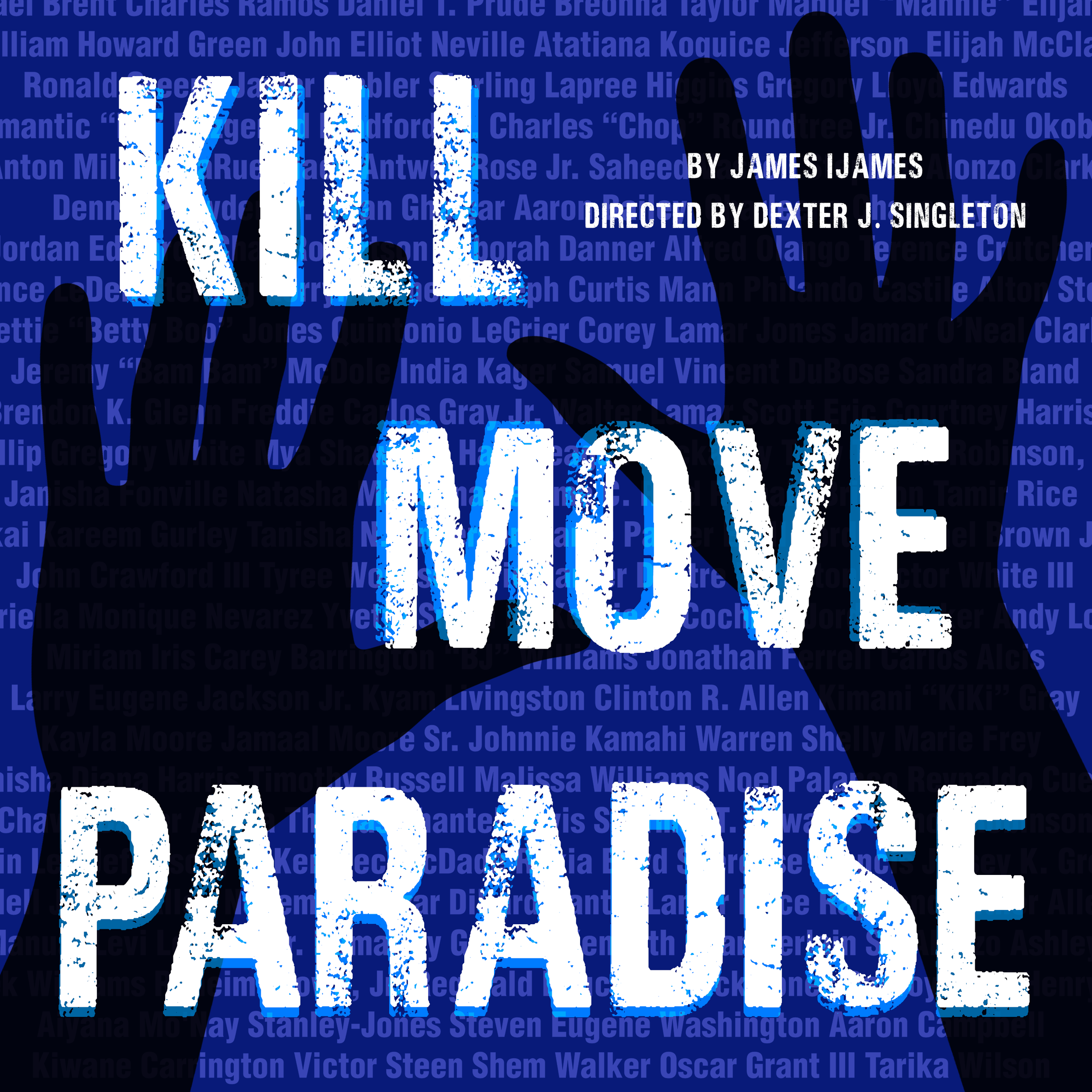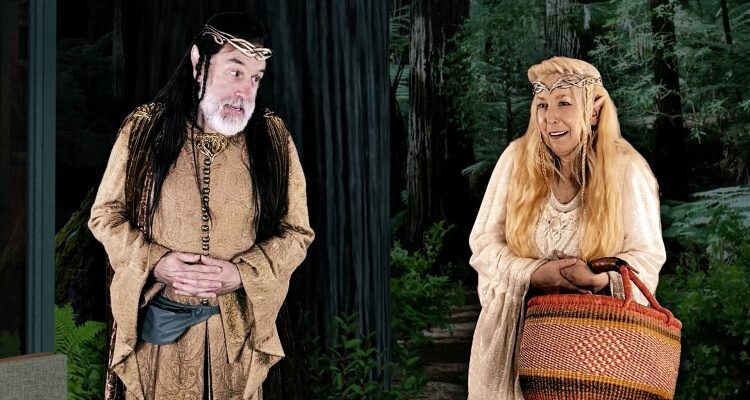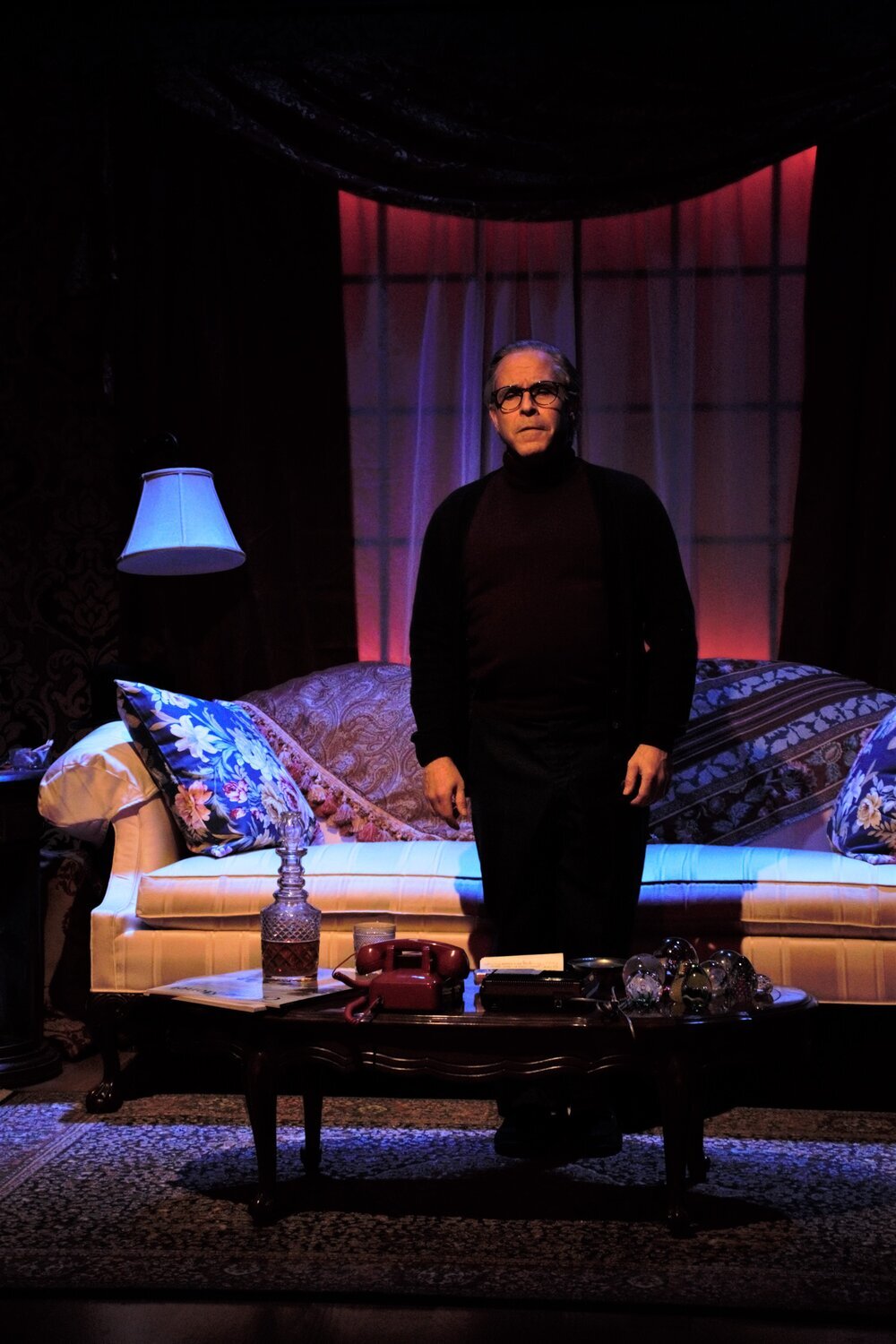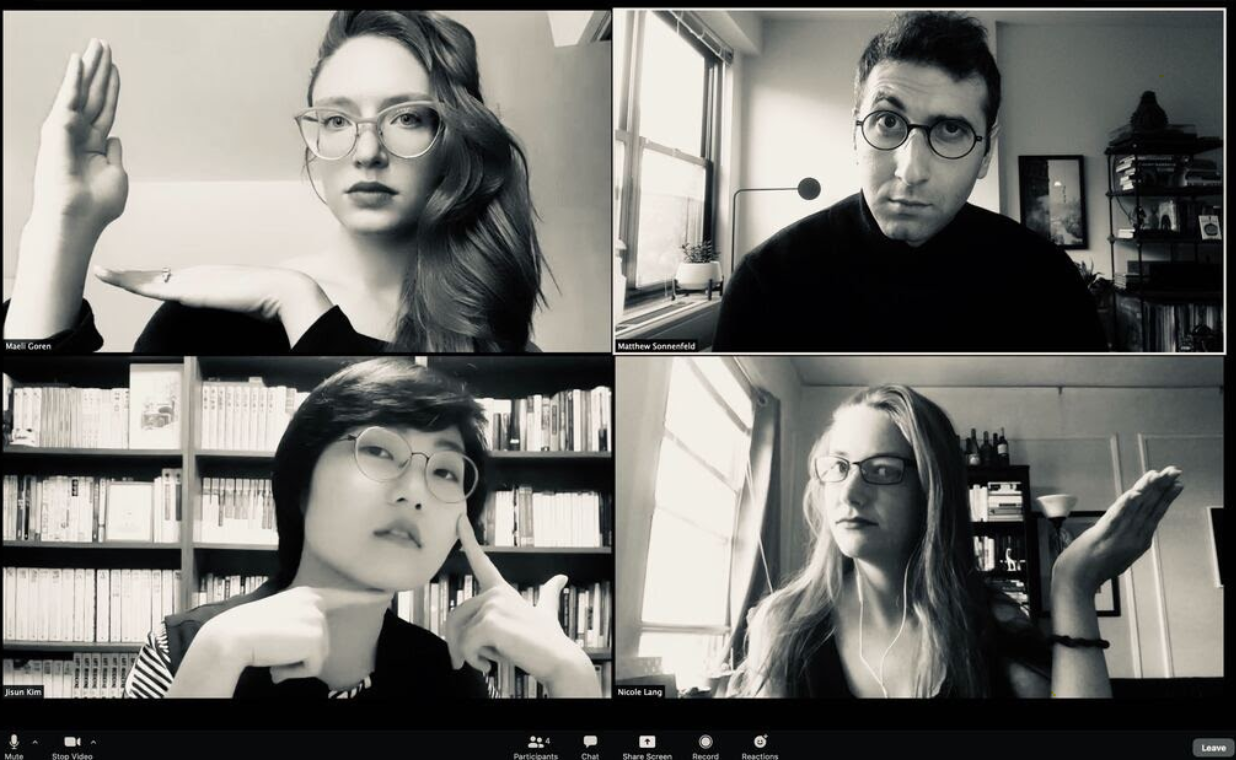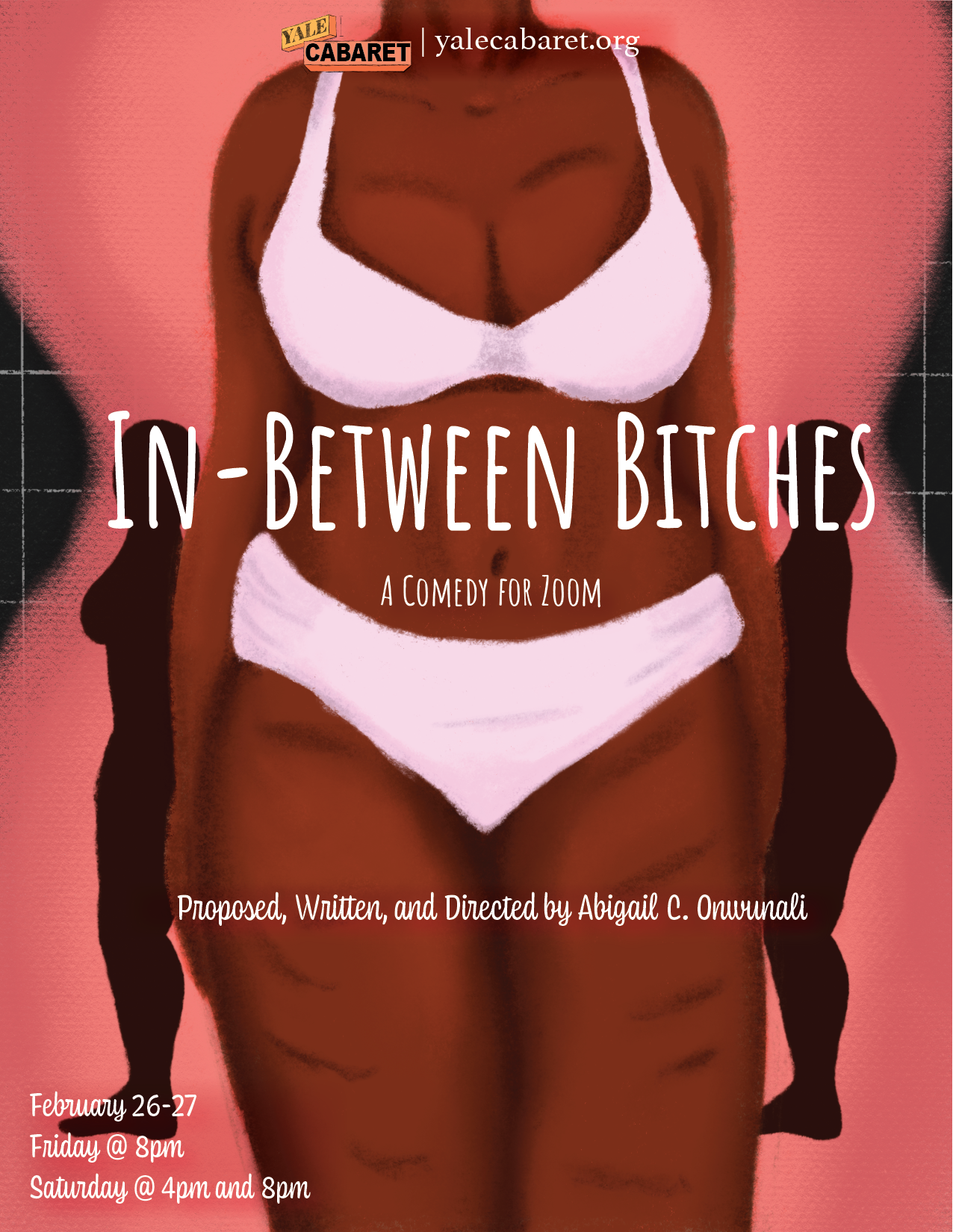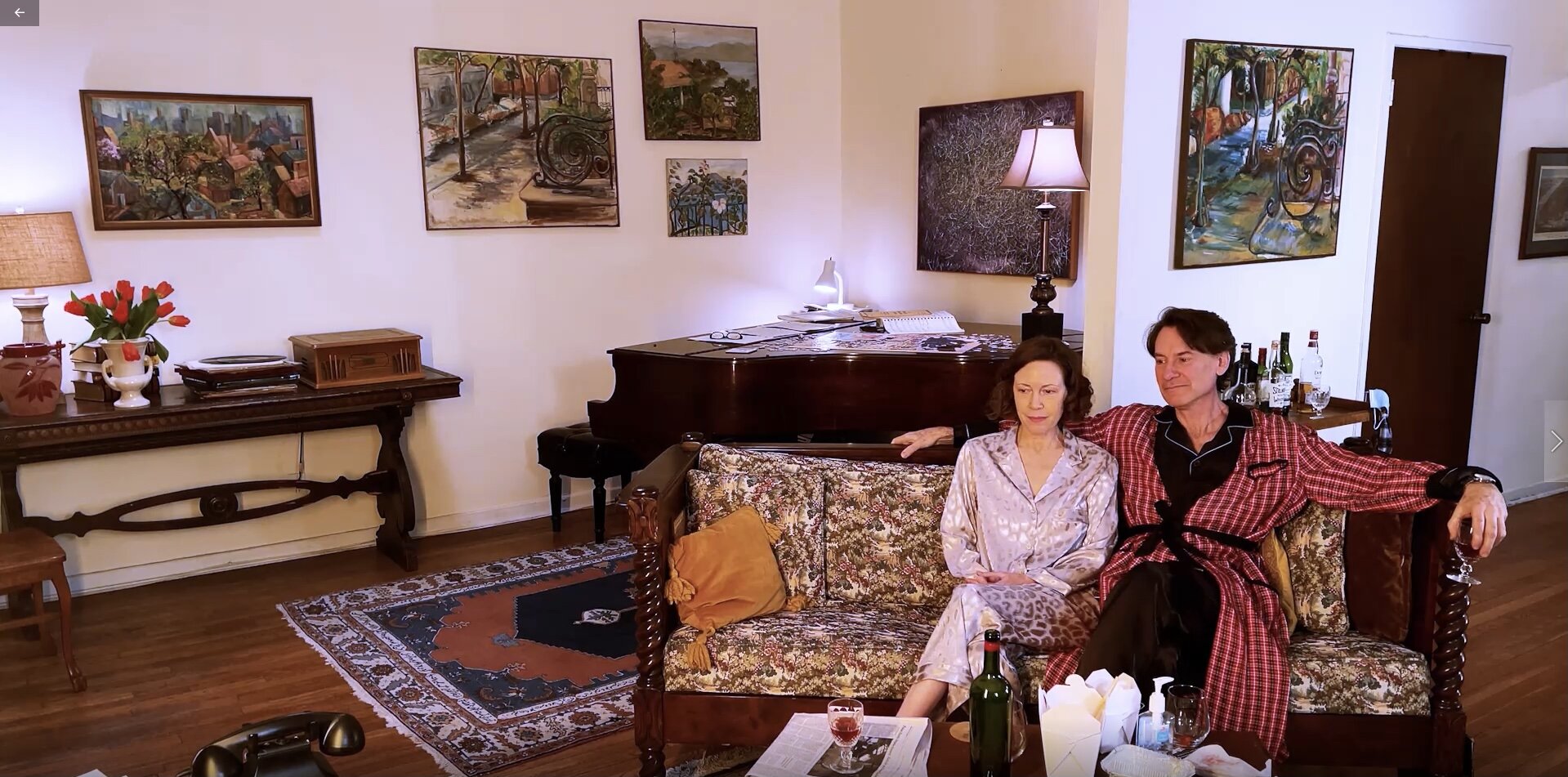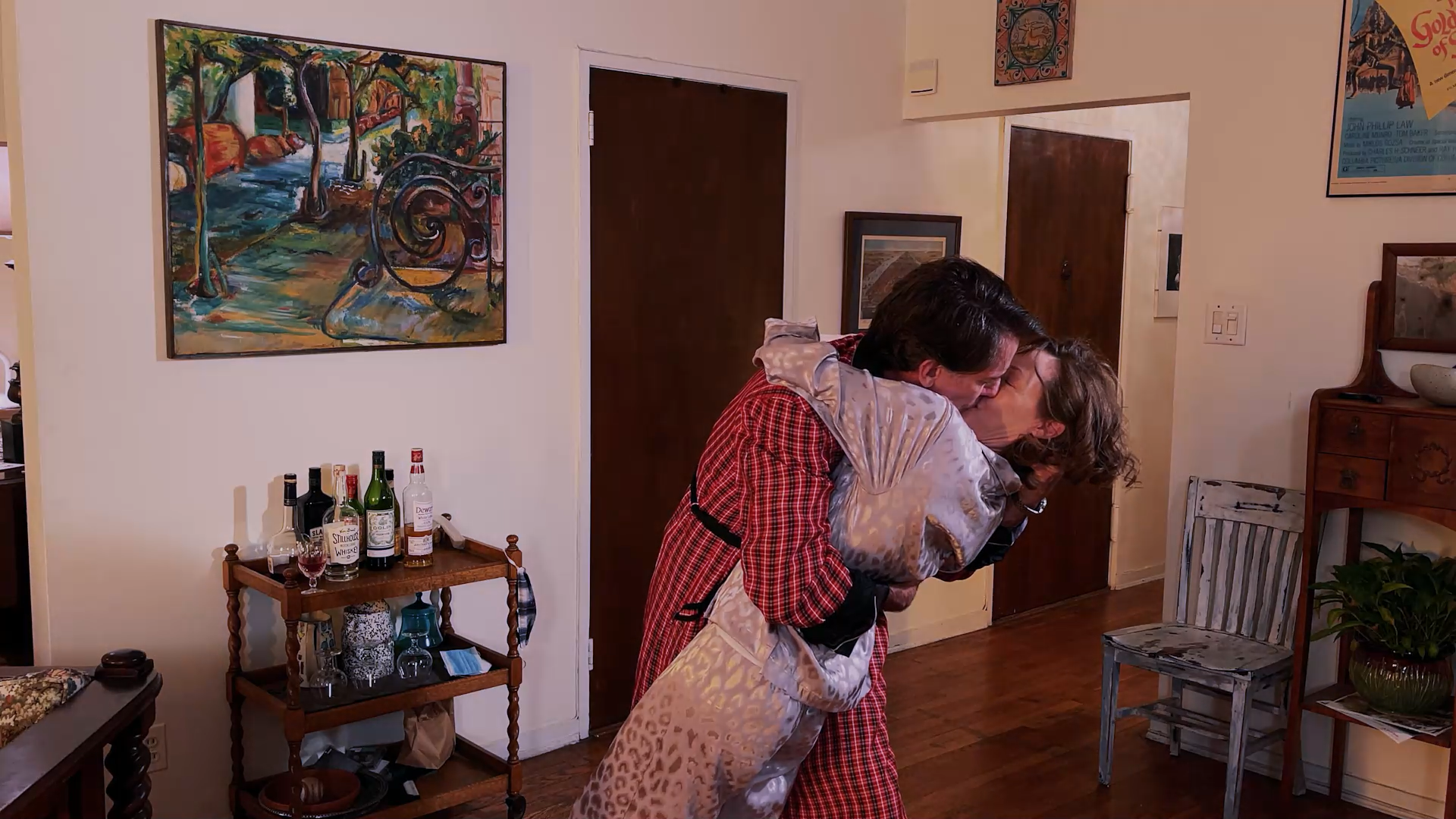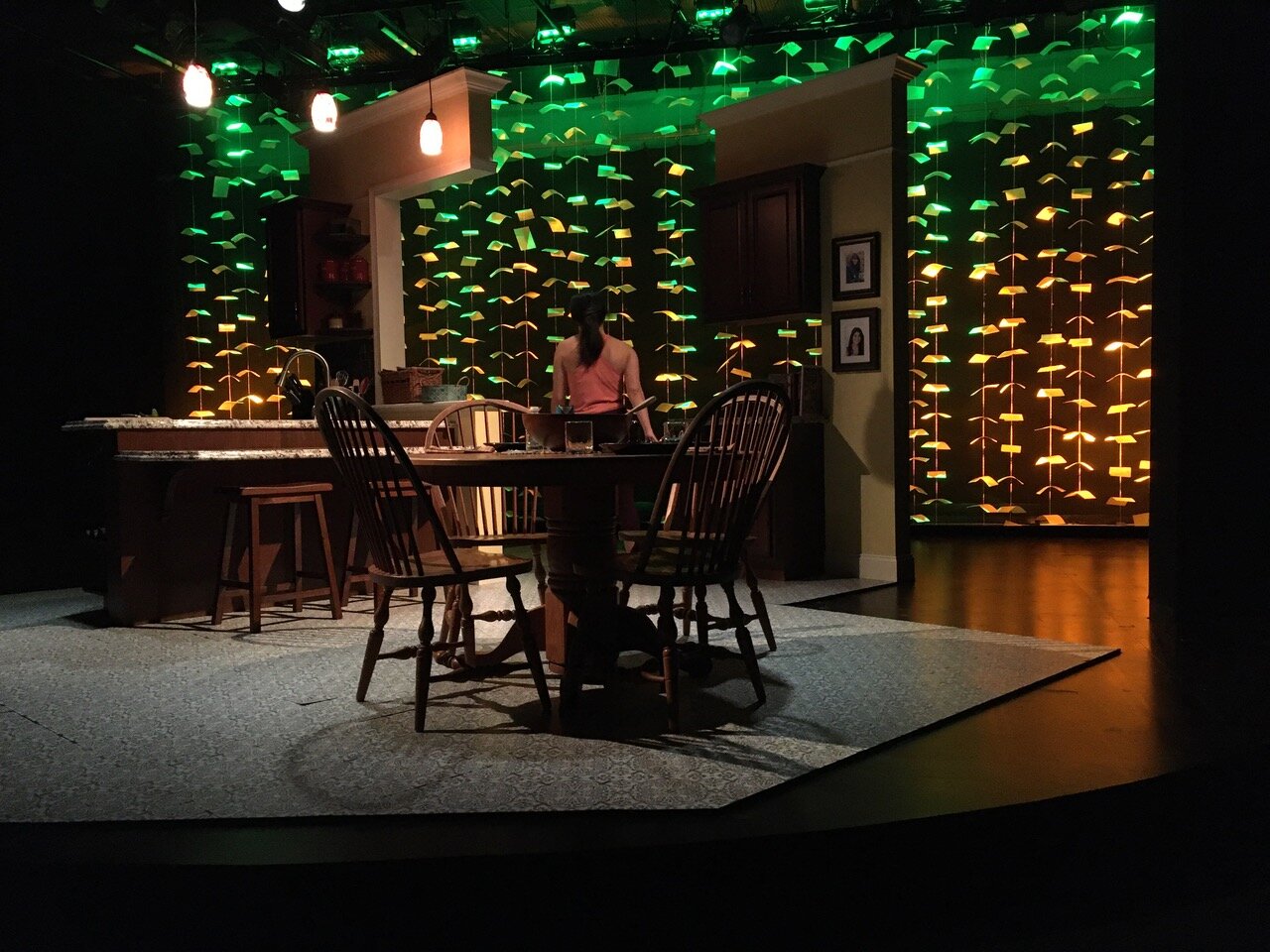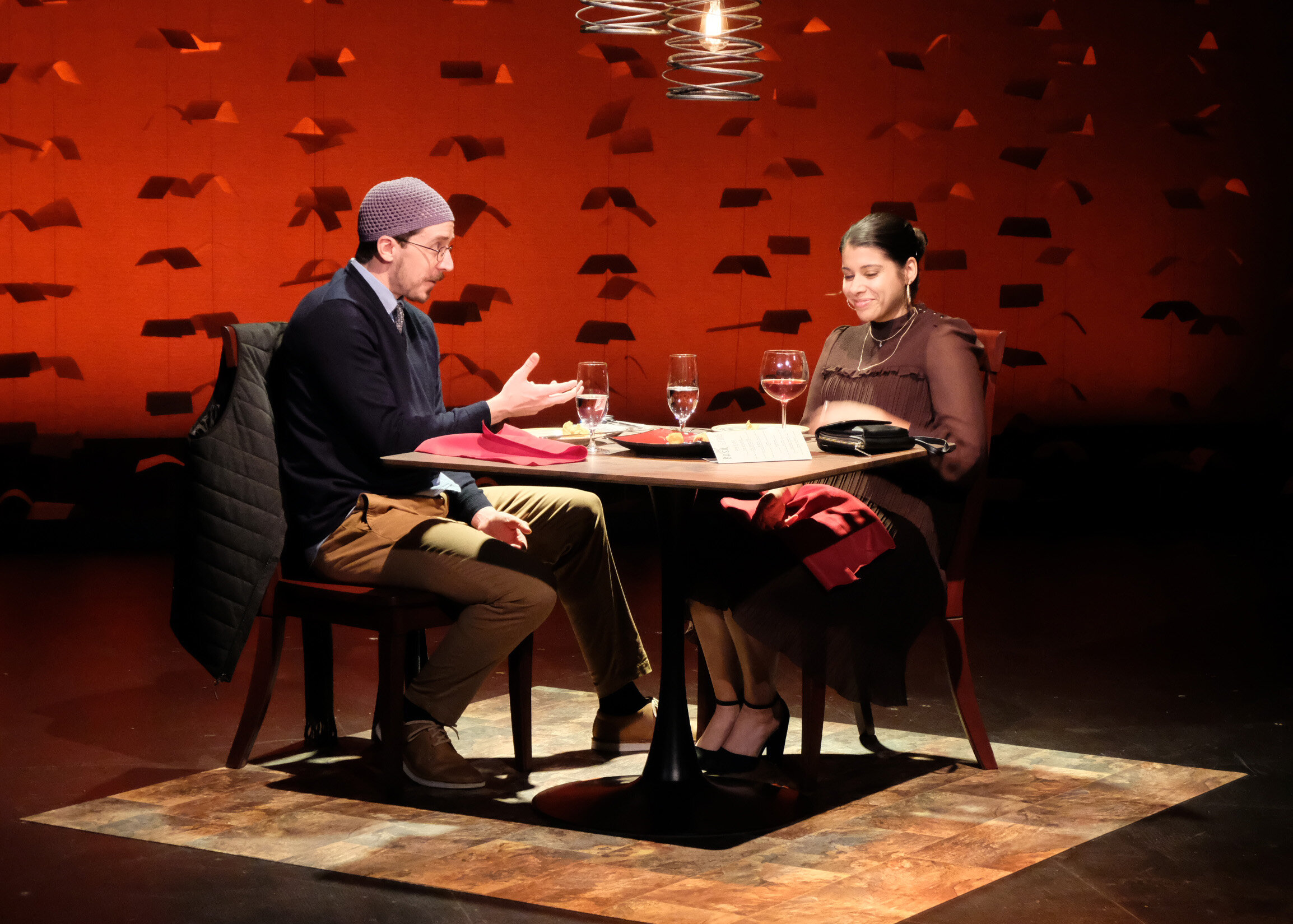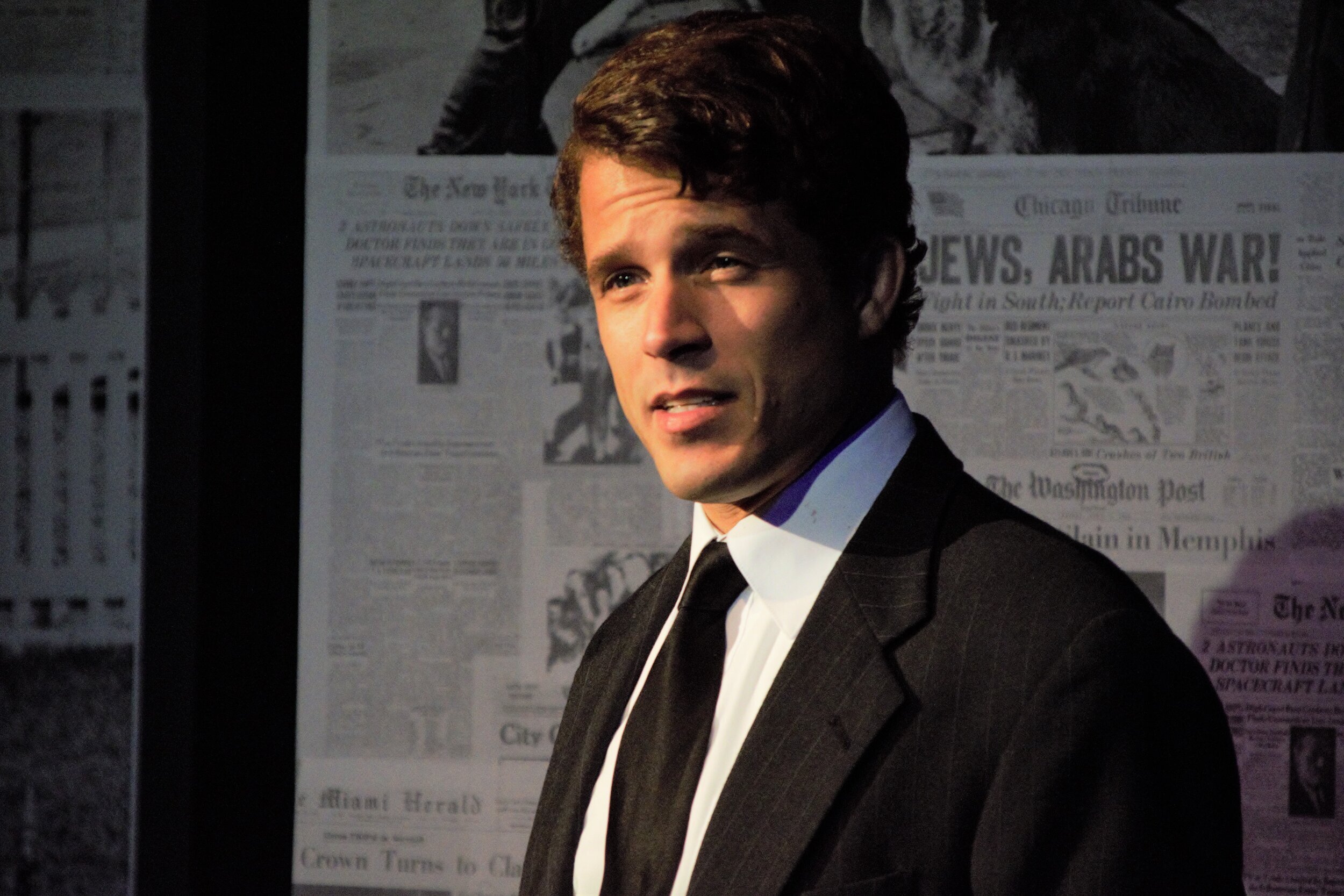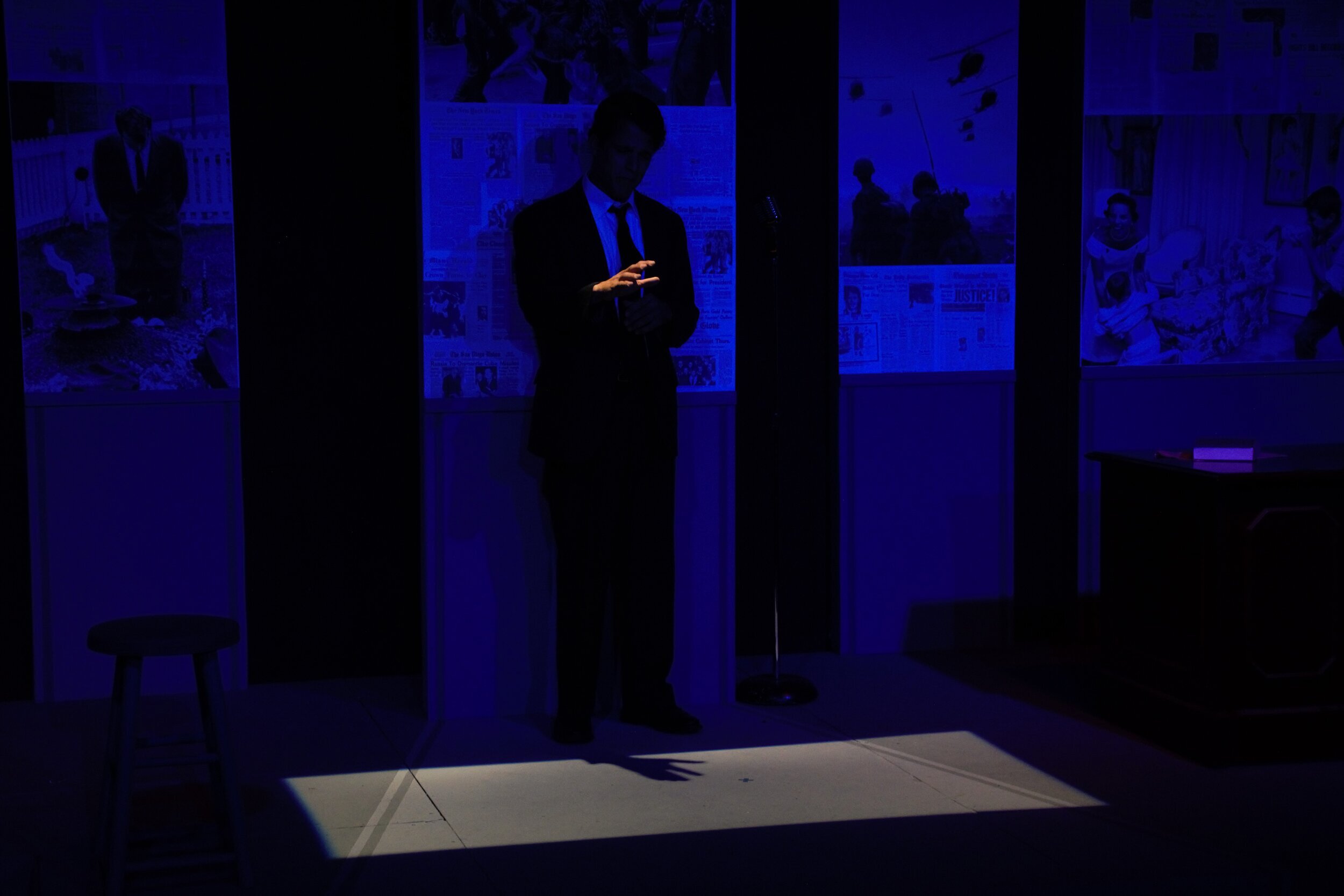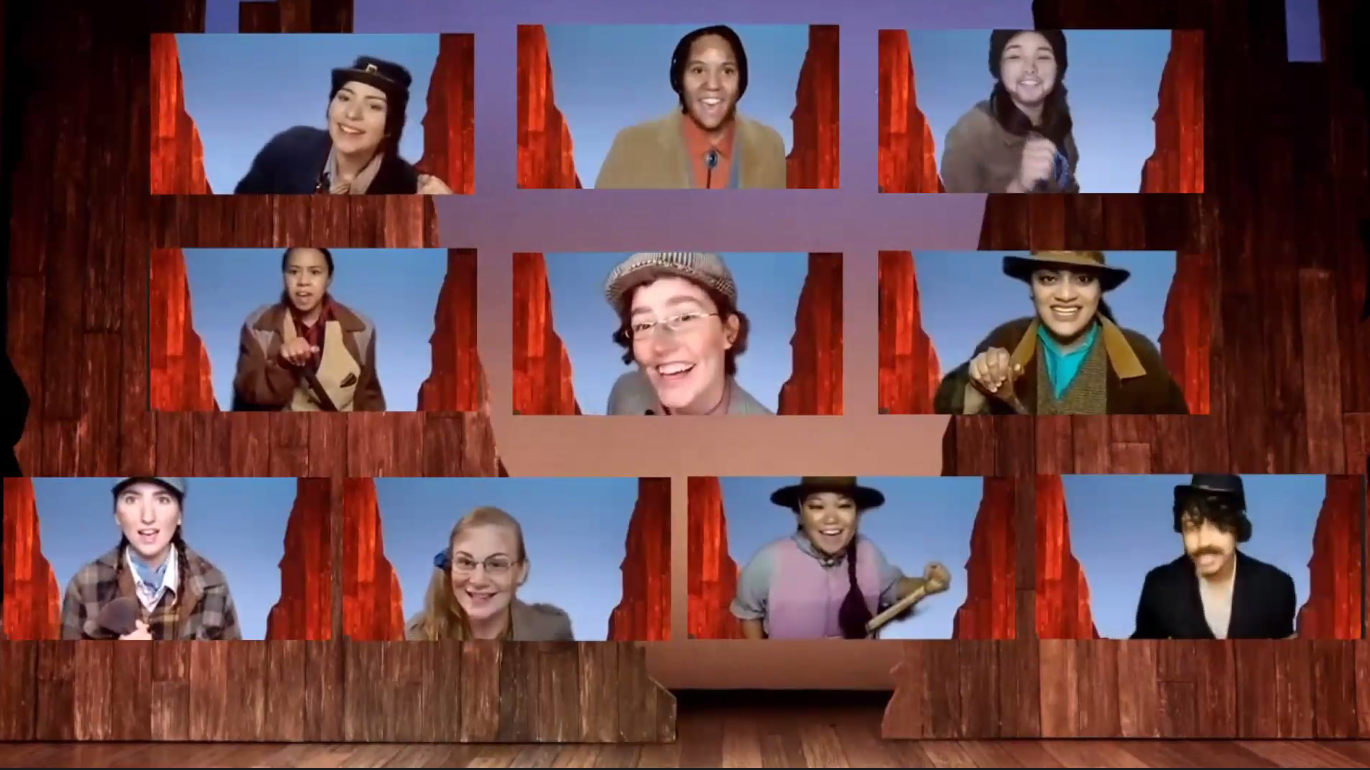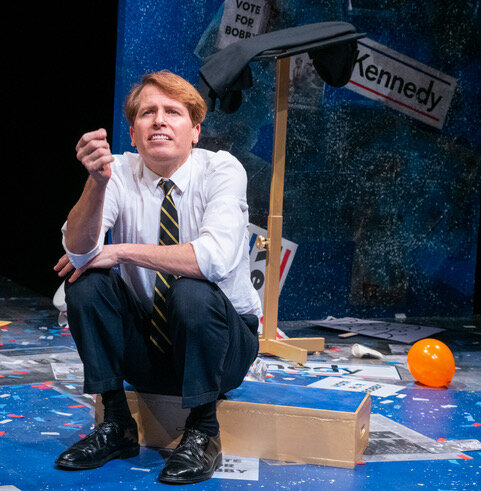Review of Next to Normal, Westport Country Playhouse
Westport Country Playhouse is back with the first play of its first full season since the pandemic shutdowns. The production of the Pulitzer-winning musical Next to Normal by Tom Kitt and Brian Yorkey, directed and choreographed by Marcos Santana, with musical direction by Emily Croome, was in the works to appear in the season that was pre-empted in 2020.
The cast of Next to Normal at Westport Country Playhouse, directed by Marcos Santana (photo by Carol Rosegg)
The show offers a full-bodied return to theater in person, with plenty of movement and heartfelt singing. If you know the show, you know it’s a gripping musical play that highlights the passions behind the problems in this family drama. Westport’s revival features non-traditional casting in the sense that the story, which has typically been centered on a white middle-class family, now takes place in the home of a family of color, led by Dar. Lee. See. Ah. in the role of Diana, a wife and mother who is trying to cope with depression and the “valleys and mountains” of bipolar mood swings.
Dar. Lee. See. Ah. as Diana and Wilson Jermaine Heredia as Dan in Next to Normal, Westport Country Playhouse (photo by Carol Rosegg)
I’ve only seen one production of the musical before and there are other marked differences. And that is mostly in how Dar. Lee. See. Ah. handles the role. There is little sense of manic comedy in Diana’s response to her situation, replaced by a stoic endurance. We watch with growing understanding of her illness and her very strong grasp of her own convictions. Dar. Lee. See. Ah.’s moving vocals take us along a trajectory in which Diana’s illness and her identity become mutually supportive. It’s as if Diana really doesn’t want to be freed from her ghosts and that’s one of the most vital things about her. Her situation is a gripping confrontation with the limits of empathy and the loneliness of the interior world.
There’s also a strong contrast with her husband, Dan. Wilson Jermaine Heredia plays him as long-suffering and more than a bit detached. We can see that he’s managed to find a way of managing his feelings which makes sense for the character but doesn’t do much to make his presence impressive. Not until his numbers “How Could I Ever Forget?” and “Why Stay?/A Promise” midway through the second act is there a sense of what this story might feel like from his point of view.
Ashley LaLonde as Natalie, Wilson Jermaine Heredia as Dan, and Dar. Lee. See. Ah. as Diana in Next to Normal, Westport Country Playhouse (photo by Carol Rosegg)
More vocal and demanding on that score is Ashley Lalonde as their daughter Natalie. She’s impatient with both father and mother and often pitches her discontent with strident shutdowns of their overtures. It’s in her moments at piano practice in the music room, where she meets her casual but steady would-be boyfriend Henry (Gian Perez) that her vulnerability fully registers. One of Natalie’s best numbers, “Superboy and Invisible Girl,” makes the case for her discontent within the family structure.
The high drama of the parental world is furthered by Katie Thompson as the doctors consulted to help Diana cope; one is portrayed as a rock chanteuse with an overbearing and aggressive manner, the other, more diffident, is in the business of providing the drugs that rob Diana of the feelings that, to her mind, make her Diana.
Dar. Lee. See. Ah. as Diana, Daniel J. Maldonado as Gabe, Wilson Jermaine Heredia as Dan in Next to Normal, Westport Country Playhouse (photo by Carol Rosegg)
The show is marked, then, by strong females supported by male roles that are a bit milquetoast. The exception is the part of Gabe, played with feral intensity by Daniel J. Maldonado. Santana’s direction and choreography come most to life in Maldonado’s leaps and effortless movement through the set’s complex levels like the free spirit he is. The note struck is a kind of “male monster of the Id” who voices a relentless call to Diana to live in a realm more intense if phantasmal. He’s unsettling, to say the least.
Adam Koch’s set is striking, lots of New Brutalist lines and the hard-edged look of stone and glass to suggest a world that lacks warmth, charm and well-being. Within that space, the characters sometimes seem doll-like, dwarfed by space itself, unable to cope with the scope of their dysfunction. The different levels of Diana’s discontent gradually become more humanized through Cory Pattak’s lighting design, which also uses dramatic raking light and silhouettes to express the changes in view even within the same song. Jen Caprio’s costumes veer from very casual and fluid for movement, to odd mixtures that sometimes distract from the mood of a scene, but the changes keep the eye entertained. It’s a visually engaging show.
Dar. Lee. See. Ah. as Diana, Wilson Jermaine Heredia as Dan in Next to Normal, Westport Country Playhouse (photo by Carol Rosegg)
The band has plenty of kick that can sometimes be a bit overpowering in a score where everything is sung and dialogue is minimal. But the big numbers that need to carry emotional weight all score here with a feeling of majesty that increases as the show goes on.
Next to Normal is a singular show, a character study, a family drama, a musical of highs and lows, an exploration of mental illness that becomes in its way a paean to the power of our personal demons. Marcos Santana’s production at Westport is more searching than certain about how best to meet the problem of Diana.
Next to Normal
Music by Tom Kitt
Book and Lyrics by Brian Yorkey
Directed and choreographed by Marcos Santana
Music Direction by Emily Croome
Scenic Designer: Adam Koch; Costume Designer: Jen Caprio; Lighting Designer: Cory Pattak; Sound Designer: Domonic Sack; Associate Director/Choreographer: Natalie Caruncho; Production Stage Manager: Caitlin Kellermeyer; Dramaturg: Katie Ciszek
Cast: Dar. Lee. See. Ah., Wilson Jermaine Heredia, Ashley LaLonde, Daniel J. Maldonado, Gian Perez, Katie Thompson
Musicians: Emily Croome, keyboard; Melody Allegra Berger, violin, keyboard 2; Wes Bourland, bass; Andy Buslovich, guitar; Bobbie Lee Crow III, cello; Arei Sekiguchi, drums and percussion
Westport Country Playhouse
April 6-24, 2022

